Bruce Willis‘ wife, Emma Heming Willis, got real about the “judgement” she faced after revealing that he lives in a second home amid his health battle with dementia.
“The criticism and the judgment that people receive is off the charts,”…

Bruce Willis‘ wife, Emma Heming Willis, got real about the “judgement” she faced after revealing that he lives in a second home amid his health battle with dementia.
“The criticism and the judgment that people receive is off the charts,”…

YouTube’s looking to crack down on depictions of violence in gaming content, while it’s also implementing new restrictions on gambling promotions, in line with evolving community…

David CannBusiness reporter
 PureSeoul
PureSeoulKorean skincare or “K-beauty” products are very popular around the world.
But as exports from South Korea hit $10.3bn (£7.7bn) last year, cosmetics companies in other countries have introduced their own K-beauty ranges that are not Korean-made.
Does this blurring of the definition matter?
K-beauty products first came to international attention in the 2010s, part of a wave of other Korean exports, such as K-pop and K-drama.
The K-beauty skincare regime can be very elaborate, involving as many as 10 different steps, each requiring a separate product. This caught the imagination of people around the world, and sales rose sharply.
Annual exports from South Korea increased from $650m in 2011 to $4bn in 2017, according to official figures, a sixfold rise in just six years.
Recognising this huge jump in demand, cosmetics brand Seoul Ceuticals was launched in 2017, named after the South Korean capital.
“We started to see this increase in growth in interest in K-beauty, and began developing a skincare brand to meet that demand… when we really saw it emerging in the US,” says Seoul Ceuticals’ director of retail relationship Ann Majeski.
“It has been extremely successful. We expect to do over $14m in sales in 2025. We’ve seen a global acceptance and demand for the K-beauty products. We’ve started selling in India, Latin America, Europe and Australia.”
But Seoul Ceuticals is not a Korean company. It is based in the US, where it also manufacturers all its products.
The business doesn’t claim to be Korean, but it does say that it makes “real, authentic Korean skincare”.
That may sound like a contradiction, but the company says it isn’t because its ingredients are sourced from South Korea.
“I think we were a little more sensitive about it when we were first starting, because we wanted to be very transparent that the products are made in the US,” says Ms Majeski.
“[But] we source our ingredients in Korea… we wanted to be able to legitimately say we are a K-beauty brand.”
But not everyone would agree with this.
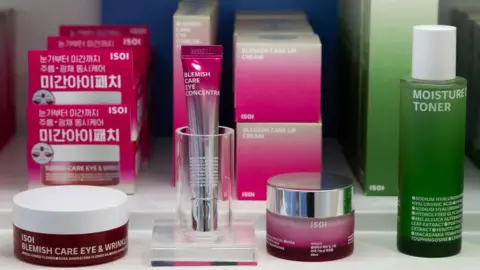 PureSeoul
PureSeoul“The products should be manufactured by a Korean manufacturer,” says Seung Gu Kim, co-founder of K-beauty cosmetics firm Hwarangpoom.
He runs the business with his wife Elisa Ahonpää-Ki. While they are based in Finland, all of their team except Elisa are Korean, and all their products are made in South Korea.
“The most important thing that we both absolutely agree is that the brand should develop its concept, and ideas, and products with a Korean perspective,” says Mr Gu Kim.
“That can come through in the ingredients, the design. Or cultural elements, basically anything that clearly connects to the brands to Korea, or at least reflects a Korean influence.”
However, the couple do admit that the definition of K-beauty remains complex.
“I guess it’s a very vague concept, because on the market you will find a lot of brands that are made by Koreans who live abroad,” says Ms Ahonpää-K.
“And then brands like Lancôme and Clinique manufacture their products in Korea and Japan, but then it doesn’t make those brands Japanese and Korean.”
There is currently no official definition of K-beauty. And there is no protected designation of origin to defend it, like in the case of Champagne or Parmigiano Reggiano cheese.
And there is no plan to set one up, according to the K-beauty Industry Association, the only K-beauty trade body officially approved by the South Korean government.
“We are currently more focused in promoting and expanding K-beauty,” says the organisation’s chairman Chang Nam Jang.
“While the trend is quite established in Asia, it is only just starting in Europe and the US, and we don’t want to throttle the growth by imposing any sanctions on them.”
However, the association does have rules for its members – they must be companies that are registered in South Korea, and their products must be officially tested and approved by Korea Food & Drug Administration. That approval is required in order to sell inside South Korea.
“If a product is developed in a way that suits the climate and environment of Korea, and is recognized as a viable product in the Korean market, then we would acknowledge it as K-beauty,” says Mr Nam Jang.
Hwarangpoom agrees with this definition, and has received approval from KFDA. And Seoul Ceuticals has also started the process to attain KFDA approval, to bring their products to Korean consumers.
With K-beauty exports from South Korea in 2024 20% higher than in 2023, there is a lot of money to be made in the sector whether the firms are homegrown or not.
In fact, South Korea is now the largest exporter of cosmetic products after France and the US.
However, this success has spawned counterfeiters.
Mark Lee is the CEO of MarqVision, a US-based business helps firms spot fakes and get them removed from sale.
“For a major Korean beauty brand, which I cannot disclose, we recently conducted 29 test purchases across major US marketplaces,” he says. “Twenty six of them were fake. So that’s a 90% counterfeit rate.”
And in 2024 as a whole, Marqvision identified $280m worth of fake K-beauty products in the US market alone.
The high number of counterfeits greatly frustrated K-beauty fan Gracie Tulio. “Shopping online for K-beauty was a really scary experience,” she says.
 PureSeoul
PureSeoulThis led to London-based Ms Tulio launching PureSeoul in 2019, a K-beauty retail business that sells authentic products sourced directly from Korean manufacturers.
She says she gets customers who visit the shop with suspected fake products to check if they are real.
“Even our customers can be sometimes tempted by the lower price [of online fakes]. It’s so tempting for them just to give it a go and see, and nine times out of 10, it’s not real,” she says.

Goals from Ethan Nwaneri and Bukayo Saka helped us progress to the quarter-finals of the Carabao Cup with a 2-0 victory over Brighton & Hove Albion.
Mikel Merino’s fine flick helped start a flowing team move, rounded off by Nwaneri early in the…
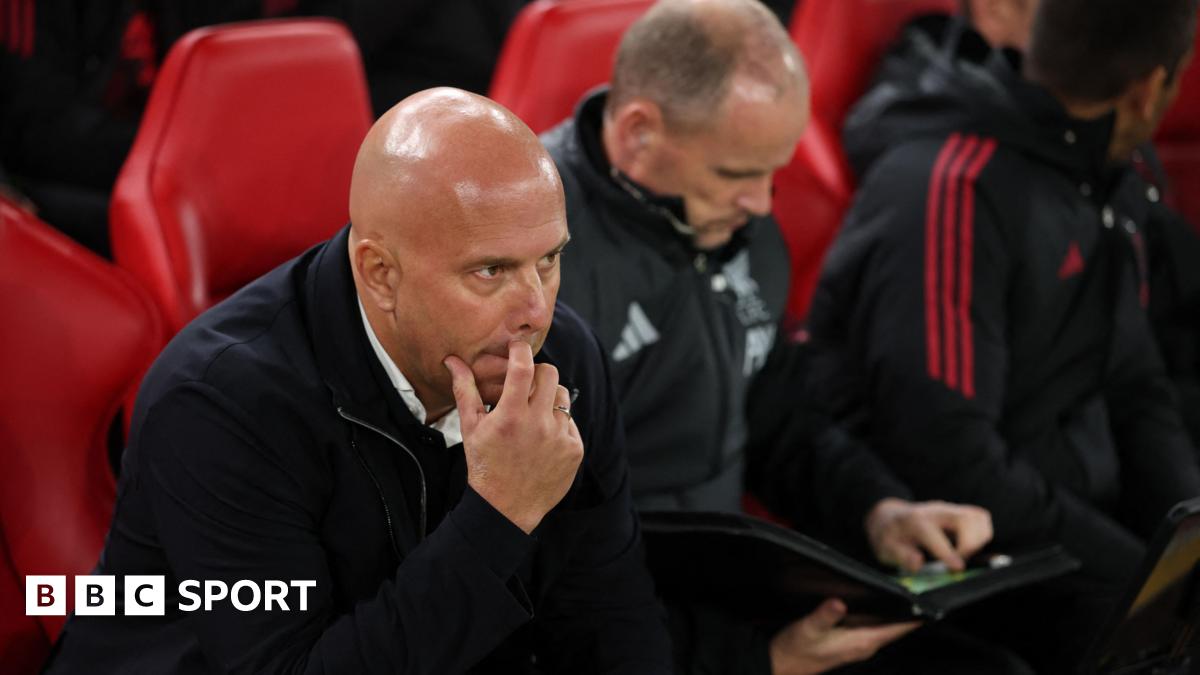
Although Liverpool’s starting 11 included 17-year-old winger Rio Ngumoha and 18-year-old midfielders Trey Nyoni and Kieran Morrison, the line-up also included seven full internationals.
Slot opted for three central defenders, with Scotland’s Andy…
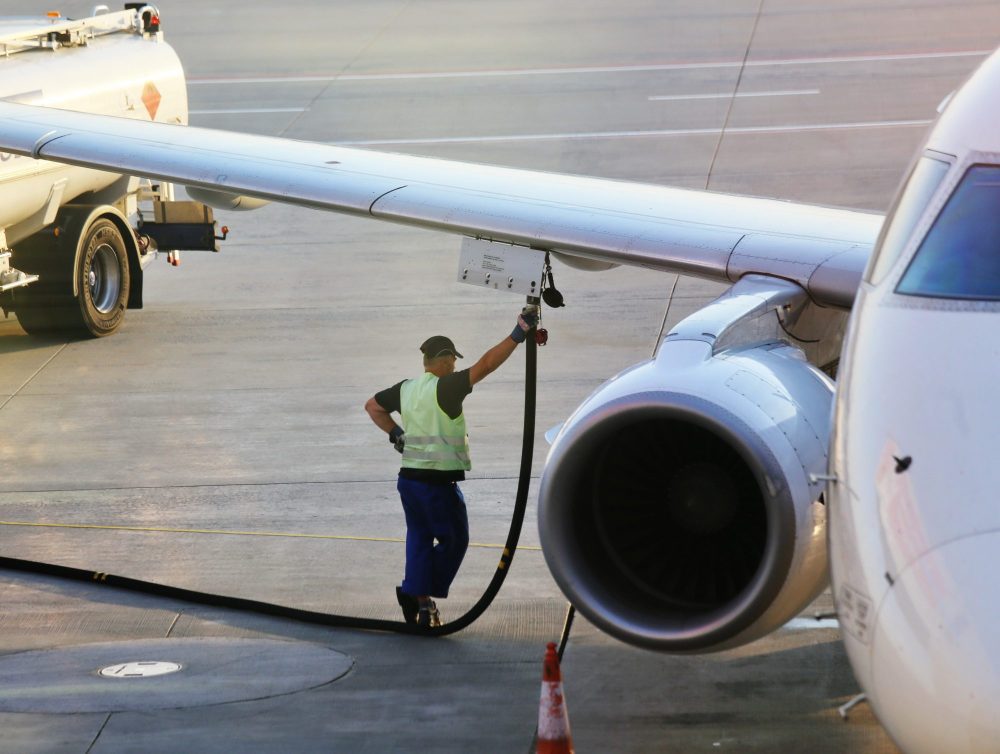

NIH Abstract
Recently, infections with the H5N1 subtype of highly pathogenic avian influenza virus (H5N1-HPAIV) in mammals have been reported worldwide, including in cows in the United States and…

Another day, another record for 15-year-old Max Dowman. But Arsenal’s teenage prodigy is taking everything in his stride, according to his manager Mikel Arteta.
The winger had already written himself into Arsenal’s history books by becoming the…

Nature Experiments suggests H9N2 has adapted to human cells but cases of person-to-person transmission haven’t been reported yet. A bird flu virus that has often been ignored because it mostly causes minor disease in birds has the potential to…
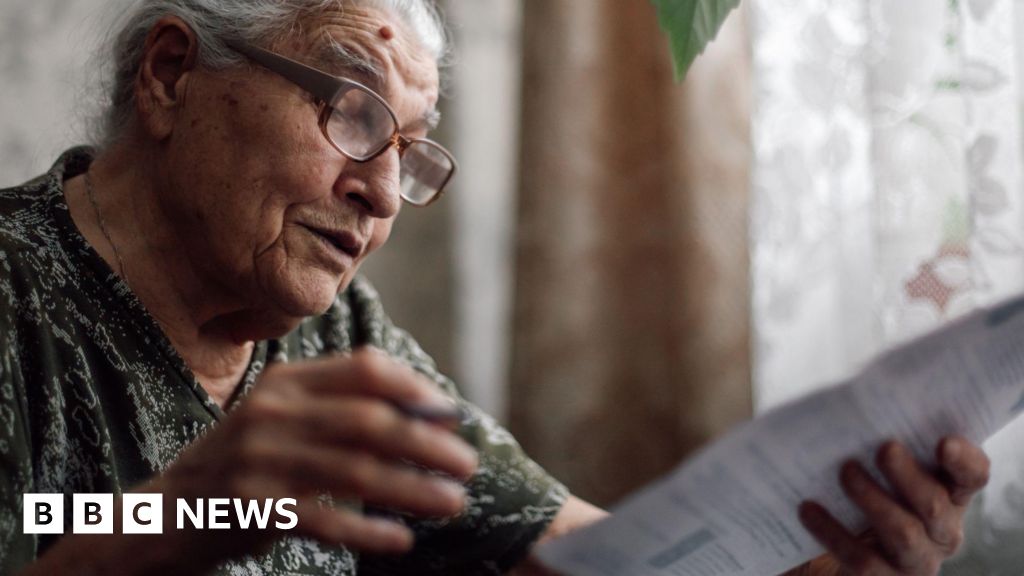
Kevin PeacheyCost of living correspondent
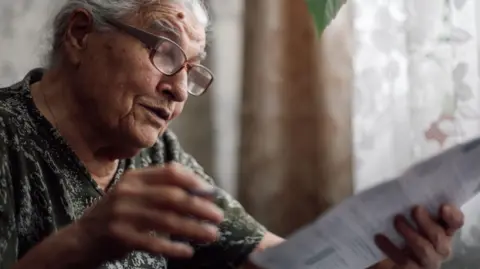 Getty Images
Getty ImagesNearly 200,000 people on benefits could have their debts to their energy supplier cancelled, if they make some effort to pay what is owed.
Unpaid bills and fees have soared in recent years with energy prices so high, leaving a record £4.4bn owed to suppliers.
Up to £500m could be knocked off the total under plans that regulator Ofgem wants to take effect early next year.
But that will also require the cost to be covered through an extra £5 added to everyone’s gas and electricity bill. Households on a price cap tariff already typically pay £52 a year to deal with historic debt as part of the £1,755 annual bill.
Under the plans:
Energy debt and arrears in England, Wales and Scotland rose by £750m in a year to £4.4bn, the latest Ofgem data shows.
The figures, which cover the period from April to June, show that a record high of more than one million households have no arrangement to repay their debt.
The regulator has been working on various projects to bring down the debt, starting early next year following consultation.
However, by recovering or cancelling up to £500m, the first phase may only reduce the rate of increase in customer debt, rather than reverse it.
On Wednesday, a committee of MPs said this debt should be cleared using energy network companies “excess” profits.
In a report, the Energy Security and Net Zero (ESNZ) Committee called it “completely inexcusable” that households were forced to choose between eating and heating while companies behind Britain’s gas pipes and power lines amassed huge profits. It said these profits should fund a debt relief scheme.
Those windfall profits were partly the result of high inflation, but Ofgem said that renegotiating price controls would bring extra costs to consumers that would outweigh the benefits.
Charlotte Friel, from Ofgem, said the growing amount of energy debt was a “significant challenge” for those in debt as well as for households that face higher bills to cover debt that can’t be recovered. She said it also meant the industry was less able to invest because of the costs of debt.
Ned Hammond, from Energy UK, which represents suppliers, said the scheme was an “important first step” but would need to be expanded to meaningfully address the debt problem and reach a wider group of customers.
Charities said the move was long overdue, as families were still facing high energy bills, although some campaigners believe the industry should pay.
Among the other schemes to tackle debt being considered by Ofgem is a requirement on new tenants and homeowners to ensure they are paying for their gas and electricity supply.
It said that when someone moves into a new home, energy accounts were switched to the “occupier”. Bills built up under these anonymous accounts until the individual contacted a supplier to register.
Suppliers estimate this accounted for £1.1bn to £1.7bn of the historic debt in the system, which was in danger of never being paid.
Ofgem wants a system similar to that used in other countries, where customers must sign up.
In practical terms, to avoid customers being cut off entirely, smart meters in these properties would be switched to prepayment mode and have some available credit. This would leave residents eventually having to top-up or sign up to the supplier.
The regulator’s plans would only cover properties where a smart meter had been fitted.
Ofgem said such schemes could eventually help bring down debt, protect vulnerable people and ease the cost burden on other billpayers.